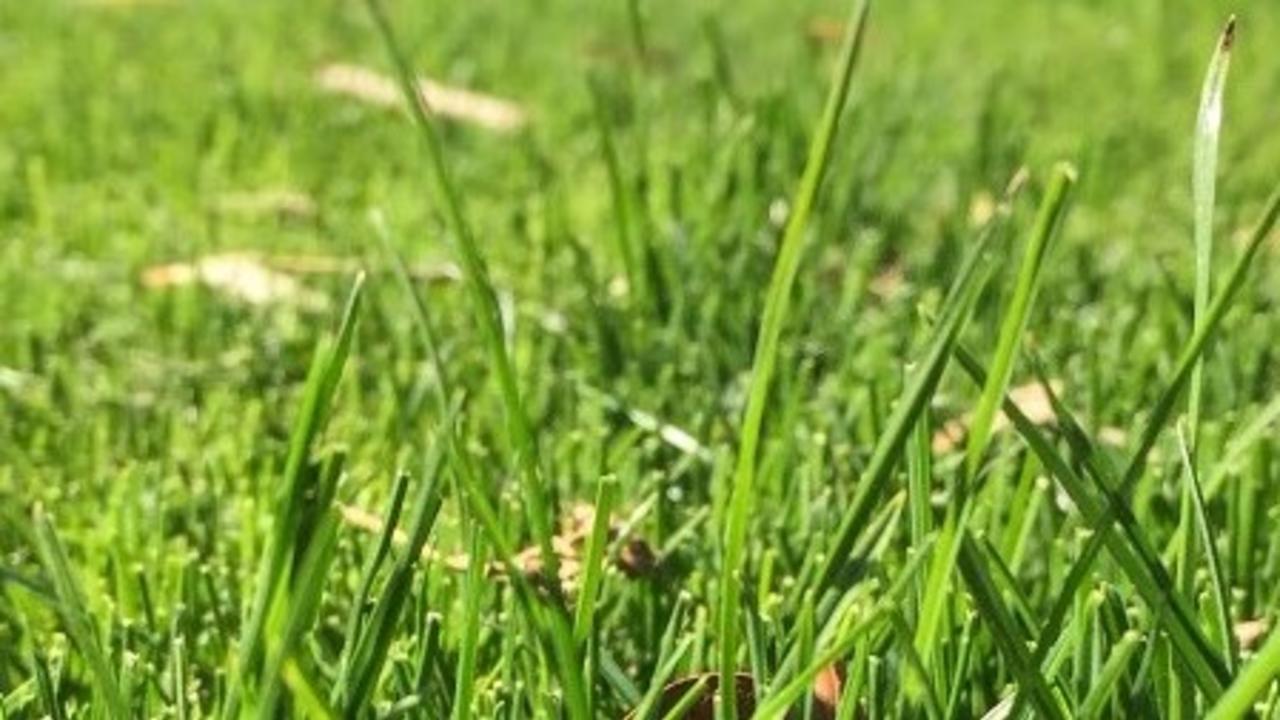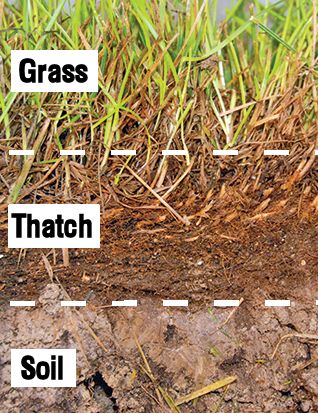Easy Lawn Care Tips for Homeowners

In this article we share easy lawn care tips that address the basic needs for maintaining your lawn or turf grass, with a focus on dry or drought stricken soil. This includes an introduction to the concept of an Integrated Pest Management (IPM), as well as basic watering practices and soil amending techniques.
Keep your lawn thriving with these easy lawn care tips!

Keeping lawns healthy can be one of the most frustrating elements of professional and homeowner landscaping, and many homeowners (and even some pros) have major misconceptions as to what leads to a healthy lawn. We find it helpful when explaining turf management to customers to compare the needs of their lawn to the needs of the human body. Like a person, plants can catch diseases, or come under attack from outside forces. And like a person, too much or little water or nutrients in the plant’s body can damage or kill it. The solution –for healthy people and plants- is essentially “healthy living” and these lawn care tips should help!
In Landscaping we call “healthy living” IPM or Integrated Pest Management. Basically, an IPM is a combination of methods of control: biological, cultural, mechanical, and chemical that we tailor to maintain healthy plants. Combined with proper nutrients, a good IPM plan will limit the need for pesticides and encourage plant health. Below I will briefly outline some of the key elements of an IPM for turf grass.
Four Basic Lawn Care Tips
- Biological Controls are natural predators for pests. In turf this can mean anything from cats for rodent control to probiotics. This control is probably the least important to immediate turf health (unless you have gophers)
- Cultural Controls are practices that promote plant health and discourage pests. This would include changing irrigation practices or limiting traffic on unhealthy or dormant lawns.
- Mechanical Controls are physical alterations to the plant. In this case alterations to turf or soil, such as proper mowing, de-thatching, and aeration.
- Chemical Controls are just what they sound like: pesticides
It should be noted that with proper attention to the other three controls there is often no need for chemicals. For the remainder of the article I will be focusing on Cultural and Mechanical Controls, specifically proper irrigation and soil amending.
Basic Irrigation
The fundamentals of good irrigation in drier climates are pretty simple, they start with the basic premise: less is more. Far more lawns are ruined by over watering than by under-watering. This is often difficult to explain to homeowners, especially when the lawn appears dry all the time. How, if the lawn is dry, can it be over watered? It works like this: constant watering does not allow the roots time to work down into the soil. Instead, they spread along the surface of the soil and provide a much weaker foundation for the plant. Turf is like a spoiled child. It thrives for a while when it's inundated with water, then suffers the moment the going gets tough. It hasn’t had to work for its roots.
Tips for Watering
Make A Plan. If you live in an area that’s prone to drought (especially with water restrictions), the homeowner might decide to let the lawn go dormant during the hottest, driest months. Contrary to popular belief you can stop watering a lawn for a couple months and it will bounce back with watering. Do Not start and stop watering cycles, letting the lawn go brown and then trying to bring it back repeatedly uses a plant’s food reserves and can kill the grass. Once you start a watering cycle you are committed through the hottest months. Identify Timing. Growing cycles are different depending on the part of the country, in some areas we may indeed irrigate year round, but almost every lawn will have a time of year where it wants less or more irrigation. The best way to tell if a lawn needs water is when your footprints remain visible or the grass is matted down where you’ve walked (they often appear grey or light brown). This is an indication that the leaves are no longer holding enough moisture. Water Infrequently, Water Deep. The amount of water needed for your lawn depends on a number of factors including but not limited to locale, type of grass, and time of year. At the end of the article is a website giving accurate water estimates for type of grass by area for California. A good rule of thumb is 1” water per week. It's best to water twice a week near dawn, irrigating roughly .5” per watering. The point is to let the roots go in search of the water, in order to do so the lawn must be allowed to dry fully. Water when it’s Cool. Preferably between the hours of 6-10 AM when the water has time to work into the soil rather than evaporate. Ensure Even Coverage. Hand watering should be reserved for areas that cannot be reached by sprinklers; it is unlikely you will attain the even coverage needed on a lawn doing it by hand. Set up sprinklers to ensure all areas of lawn are equally covered. Sprinkler heads should, ideally, have head-to-head coverage. In order to measure the water level, place a few tuna cans around the lawn and check how long it takes to get to .5”. Work with the Weather. If it’s going to rain let mother nature do the work. Less is More. Over watering, especially frequent short waterings, will make your turf weak and subject to drought. Don’t get your grass addicted to water; eventually it will go into withdrawal.
Basic Soil Amending and Turf Maintenance
Now that we’ve allowed for proper irrigation, let’s address nutrient uptake. Let’s return to our analogy of the human body. If we eat the wrong things or too much/little we get sick right? The same goes for plants. Moreover, if external factors keep us from absorbing the nutrients we need it can affect our health. Enter Soil Amending. Although we are talking about nutrients, I am not going to get into a prolonged discussion on fertilizers, as fertilizer and pesticide use is a topic in and of itself. It is worth noting that most landscapers use a pelletized, nitrogen based fertilizer on turfgrass, applied at manufacturer's specifications. What is important to this article is how this nutrition (read: fertilizer) is absorbed. It does no good to feed a lawn if all the fertilizer washes off with the first watering. If the soil is not amenable to absorption it’s like trying to feed yourself by rubbing food on your belly. You’re going to starve. There are many factors that affect nutrient uptake, here we will focus on the two most common problems: Thatch Layer and Soil Consistency
Thatch Layer
The thatch layer is the area between the stalk of the grass and the soil; it is composed of compressed grass hay and roots that have not penetrated deep enough into the soil. The thickness and density of the thatch layer is important because at a certain point it becomes a waterproof shell that keeps water and nutrients from reaching the soil. Checking thatch is easy. Cut a plug of dirt out of the ground with a plug extractor (cheap and available at most garden stores) or use your knife if you don’t mind dulling it. If the layer between grass and dirt is over ¼ inch it needs attention.

Photo Credit: Just Lawns UK
There are two techniques for dealing with thatch layer. The first, aeration, is effective for punching holes through the thatch, allowing nutrients through as well as microbes that help amend the soil. Aerators are available for rent if necessary. Saturate the lawn with water before aeration to allow maximum penetration into the soil. It is important to punch many holes in the thatch layer. I aerate as though mowing the lawn, covering every inch of turf. Then I do it again in a different pattern. On some problem properties I aerate several times a season. The second technique is called de-thatching. This is a bit of a misnomer because de-thatchers (also called power-rakes, power-brooms, and a myriad of other names) generally remove grass residue that sits on the surface and rarely actually penetrate the thatch layer. They are necessary however, as that residue will eventually become thatch, and the removal of the dead grass directly contributes to turf health. Dethatching should generally be done in the spring, at the beginning of the grow cycle, to remove any dead growth from the year before. Dethatchers come in many forms and operate differently; the goal is to remove the light brown dead grass while leaving the green grass behind. A few blades of living grass coming out in the process in fine, but if you’re tearing up the turf it's time to check the manual. Rake up residue or remove with a blower, you do not want to leave the collected dead grass on the turf.
Soil Consistency
Dealing with soil issues is also a topic that needs more time than available here. However there are some quick steps that can be taken to overcome some of the common soil problems. Perhaps the most frustrating problem is soil that is hard or clay-like and does not lend itself to penetration. An aerator can punch holes in the soil but it does nothing to change the overall consistency of the soil. To break up more clay-like soils I like a combination of humic-acid (or a fertilizer high in humic acid) and occasional light spreading of organic compost throughout the turf, preferably combined with aeration. If the soil is so hard no grass is growing at all it is best to till in compost or even planting-dirt to achieve a healthier consistency before reseeding. Often hard soil is a result of overwatering. The extra water encourages root growth only along the surface and eventually the water does not penetrate the thatch, washes the nutrients away, and hardens the soil.
Conclusions
While this article only scratches the surface of proper turf maintenance, these lawn care tips should give you the basic tools necessary to start an established lawn on a proper IPM plan. With proper irrigation and maintenance, a nice lawn is fairly easy to attain. Remember that changes do not happen overnight, and can sometimes take a year or years to achieve, especially in well-established lawns. A regular, “healthy lifestyle” will build the foundation for a lawn that is easy to manage on a day-to-day basis for years to come.
Resources
- UC Statewide IPM General Watering Tips
- Watering times for California by region and type of turf
- Drought resistant turf strains
FREE REPORT - 8 Ways To Save Water In Your Landscape
Learn the techniques we use on a daily basis to maximize your water budget.
